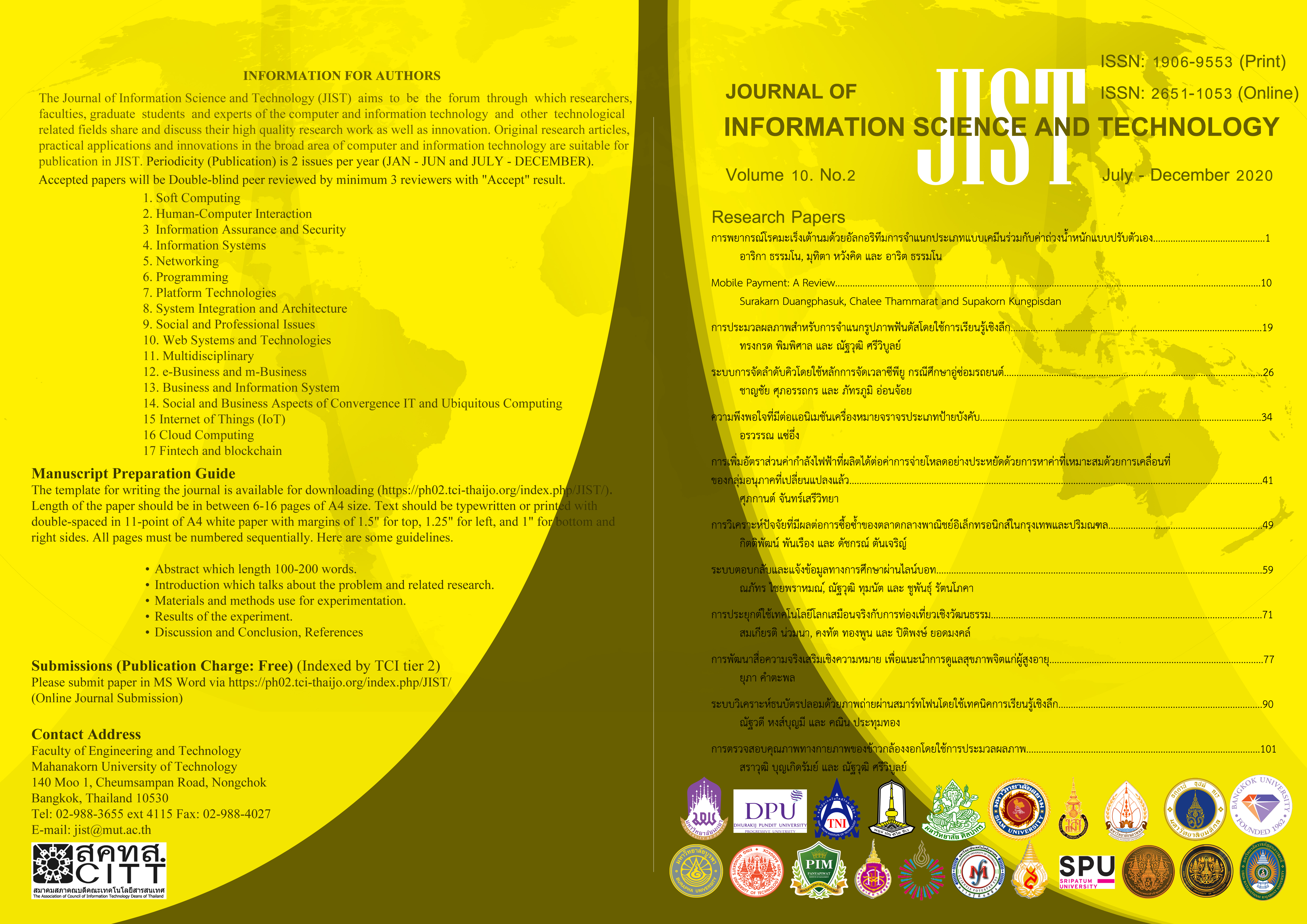Application Virtual World for Cultural Tourism
Main Article Content
Abstract
The purpose of the study is to invent an application that can be applied in Augmented Reality to create a virtual world for cultural Tourism. The application will be used as the guideline in the tourism promotion campaign in Chiang Mai province. It integrates virtual technology into cultural tourism. Since Chiang Mai is 700 years old and a conservation city, therefore, this study will apply the virtual technology for cultural tourism and integrates the computer graphic model to create virtual worlds for the users to perceive every aspect of the 3D model through the mobile device. The Computer graphic 3D model of JadiLaung temple in Chiang Mai province is one of the virtual worlds on the application that created by AR technology. This virtual world will display the new brand experience to tourists. The Virtual reality history system is one of the functions of the application that will give the information and the configuration about the archaeological sites that are now seen incomplete.
Article Details
This work is licensed under a Creative Commons Attribution-NonCommercial-NoDerivatives 4.0 International License.
I/we certify that I/we have participated sufficiently in the intellectual content, conception and design of this work or the analysis and interpretation of the data (when applicable), as well as the writing of the manuscript, to take public responsibility for it and have agreed to have my/our name listed as a contributor. I/we believe the manuscript represents valid work. Neither this manuscript nor one with substantially similar content under my/our authorship has been published or is being considered for publication elsewhere, except as described in the covering letter. I/we certify that all the data collected during the study is presented in this manuscript and no data from the study has been or will be published separately. I/we attest that, if requested by the editors, I/we will provide the data/information or will cooperate fully in obtaining and providing the data/information on which the manuscript is based, for examination by the editors or their assignees. Financial interests, direct or indirect, that exist or may be perceived to exist for individual contributors in connection with the content of this paper have been disclosed in the cover letter. Sources of outside support of the project are named in the cover letter.
I/We hereby transfer(s), assign(s), or otherwise convey(s) all copyright ownership, including any and all rights incidental thereto, exclusively to the Journal, in the event that such work is published by the Journal. The Journal shall own the work, including 1) copyright; 2) the right to grant permission to republish the article in whole or in part, with or without fee; 3) the right to produce preprints or reprints and translate into languages other than English for sale or free distribution; and 4) the right to republish the work in a collection of articles in any other mechanical or electronic format.
We give the rights to the corresponding author to make necessary changes as per the request of the journal, do the rest of the correspondence on our behalf and he/she will act as the guarantor for the manuscript on our behalf.
All persons who have made substantial contributions to the work reported in the manuscript, but who are not contributors, are named in the Acknowledgment and have given me/us their written permission to be named. If I/we do not include an Acknowledgment that means I/we have not received substantial contributions from non-contributors and no contributor has been omitted.
References
M. R. Heim, Virtual Reality Wave 3. Elsevier Inc., 2017.
C. Mahn, “The virtual tourist gaze in Greece, 1897-1905,” Ann. Tour. Res., vol. 48, pp. 193–206, 2014, doi: 10.1016/j.annals.2014.06.001.
L. Repola, N. Scotto di Carlo, D. Signoretti, and J. Leidwanger, “Virtual simulation of a late antique shipwreck at Marzamemi, Sicily: Integrated processes for 3D documentation, analysis and representation of underwater archaeological data,” Archaeol. Prospect., vol. 25, no. 2, pp. 99–109, 2018, doi: 10.1002/arp.1592.
A. H. and A. L. Theodore Koterwas, Jessica Suess, Scott Billings, “Augmenting Reality in Museums with Interactive Virtual Models,” Augment. Real. Virtual Real., pp. 119–132, 2018, doi: 10.1007/978-3-319-64027-3.
L. Duan, T. Guan, and Y. Luo, “Wide area registration on camera phones for mobile augmented reality applications,” Sens. Rev., vol. 33, no. 3, pp. 209–219, 2013, doi: 10.1108/02602281311324663.
D. Liu, K. K. Bhagat, Y. Gao, and T. Chang, “Virtual, Augmented, and Mixed Realities in Education,” in The Potentials and Trends of Virtual Reality in Education, pp. 105–130, 2017.
R. Hammady and M. Ma, “Designing Spatial UI as a Solution of the Narrow FOV of Microsoft HoloLens: Prototype of Virtual Museum Guide,” pp. 217–231, 2019, doi: 10.1007/978-3-030-06246-0_16.
R. Hammady, M. Ma, C. Strathern, and M. Mohamad, “Design and development of a spatial mixed reality touring guide to the Egyptian museum,” Multimed. Tools Appl., vol. 79, no. 5–6, pp. 3465–3494, 2020, doi: 10.1007/s11042-019-08026-w.
G. J. Harkema and A. Rosendaal, “From cinematograph to 3D model: how can virtual reality support film education hands-on?,” Early Pop. Vis. Cult., vol. 18, no. 1, pp. 70–81, 2020, doi: 10.1080/17460654.2020.1761598.
N. Pretto, E. Micheloni, S. Gasparotto, C. Fantozzi, G. De Poli, and S. Canazza, “Technology-Enhanced Interaction with Cultural Heritage: An Antique Pan Flute from Egypt,” J. Comput. Cult. Herit., vol. 13, no. 2, 2020, doi: 10.1145/3355395.



